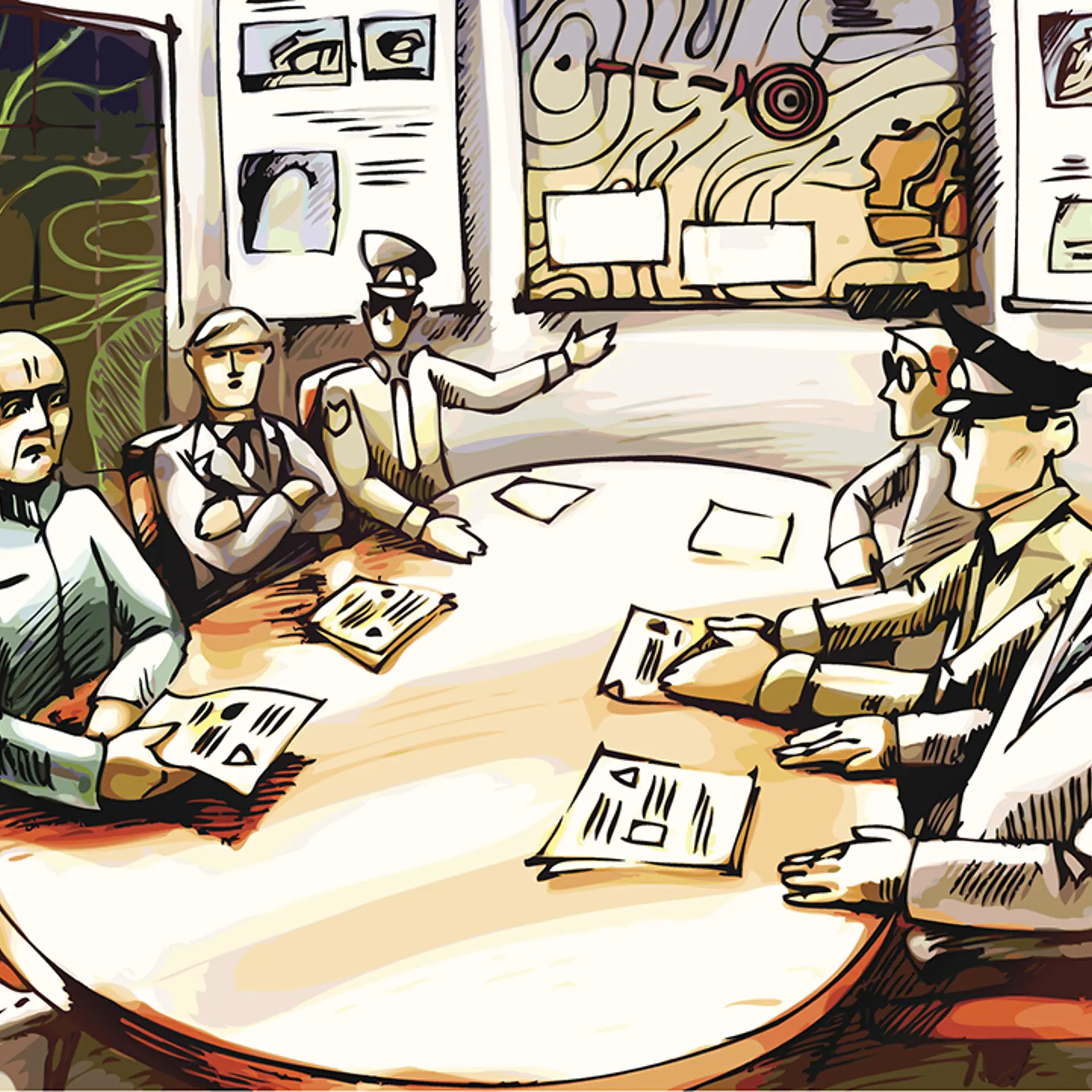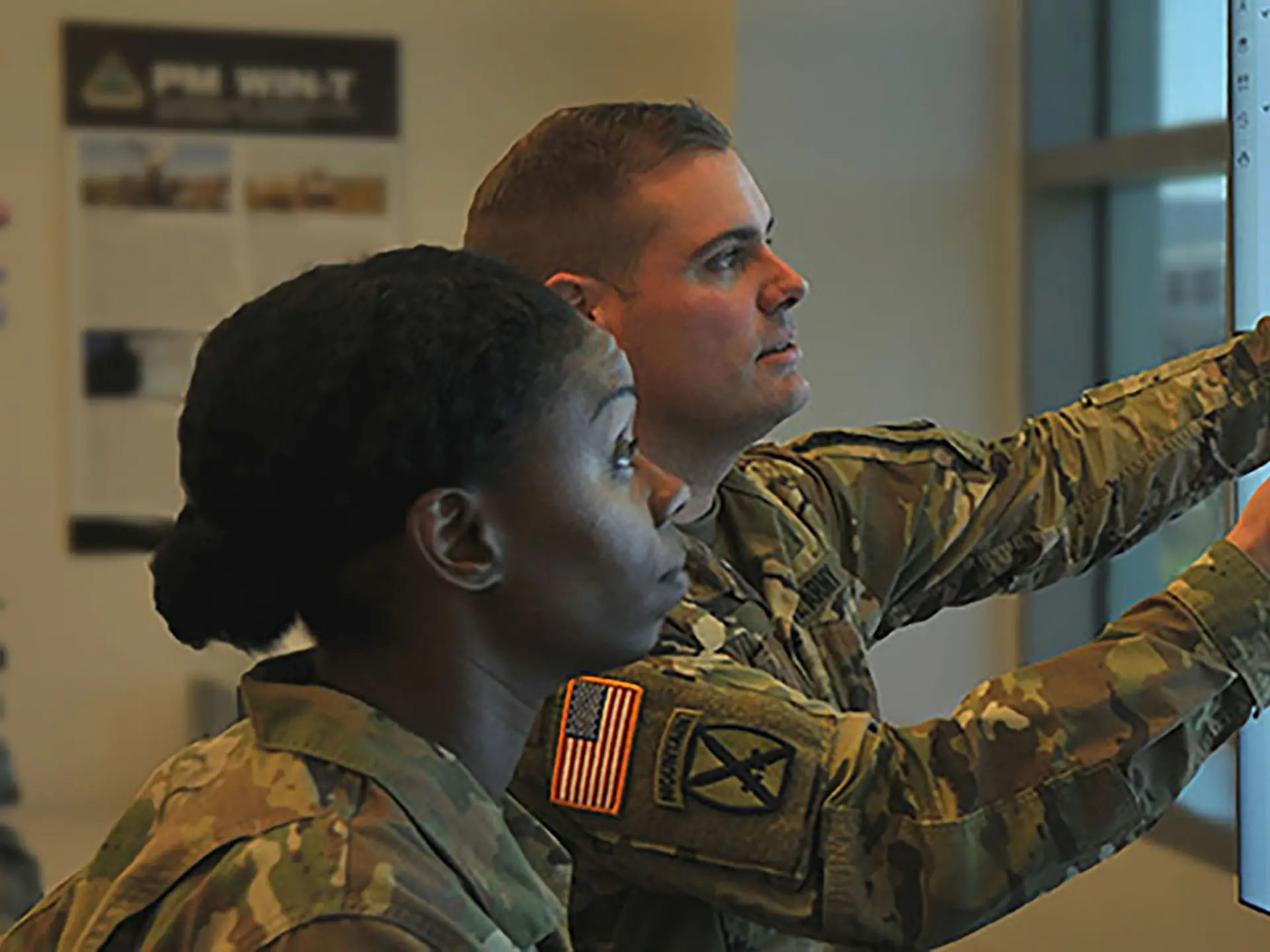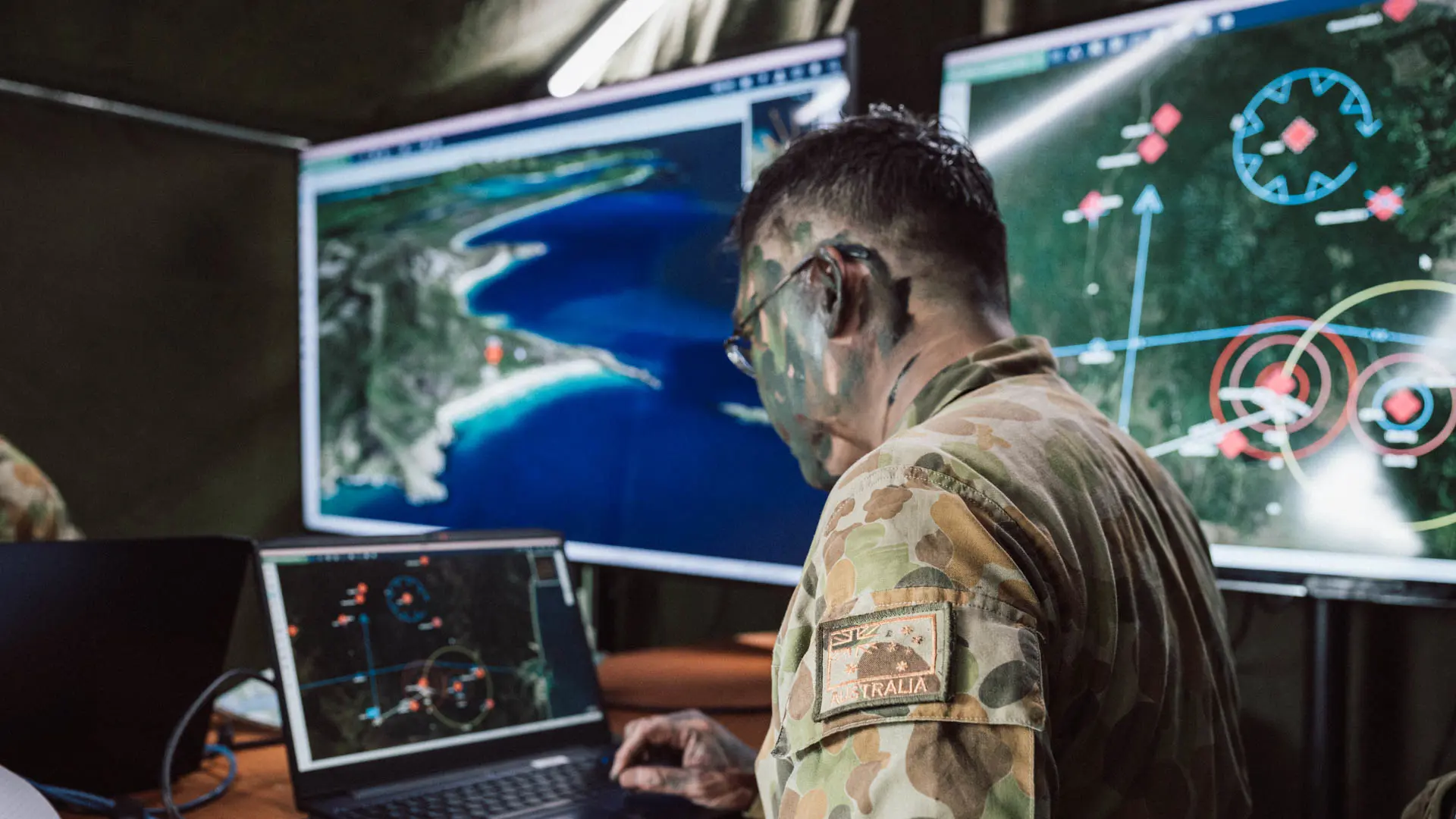Are you using the right tools?
Optimise your briefing skills by combining SitaWare and Microsoft PowerPoint
The development of Microsoft’s PowerPoint has significantly helped presenters around the world to summarise and communicate messages to audiences for decades.
For the military, it was an opportunity to move from crude presentations on acetate and overhead projectors and into a computer age. Slide layouts and an in-built graphics design engine allowing presenters to have nearly unlimited flexibility in how they could show complex concepts to their audiences.
However, its use and abuse has meant that it has become the bane of many military officers’ lives. In a 2010 article for The New York Times, senior members of the US military bemoaned the amount of time spent on generating presentations, as well as the ability to create highly complicated infographics.
“When we understand that slide, we’ll have won the war,” observed General Stanley McChrystal, the leader of American and NATO forces in Afghanistan, of one particularly complex slide.

However, the role of PowerPoint in the briefing cycle is firmly entrenched. One aspect of this is the presentation of the common operational picture (COP) to deliver a baseline understanding of the battlespace. For staff involved in briefing commanders, creating overviews of the COP in PowerPoint for briefings would be done manually each time, taking up valuable time for personnel at all levels. Security settings on a network or the nature of the BMS may prohibit screenshotting, so more manual processes need to be followed. Using templated graphics and symbology within PowerPoint’s design suite, the disposition of friendly and enemy forces could be added to a map, along with the plans for the day, and more.
This approach could mean a loss of fidelity in the graphical representation, and potential inaccuracies or errors of force dispositions. Enhancements that modern C2 systems provide – such as field of view and range data – would be left out due to the difficulty in recreating them manually.
So, how can you make sure that you are delivering the most accurate situation in your briefings?
Go to the source.
Leverage SitaWare's tools and features
Within the SitaWare suite, users develop map layers to highlight particular areas of interest – changes in positions, enemy positions and capabilities, and more.
These are then zoomed to the area of interest, and bookmarked for ease of navigation and searchability. This function is used on a regular basis for staff in a command environment to help easily navigate a complex battlespace overview.
From these bookmarks, a military staffer can then simply click to export the PowerPoint, and slides are generated showing the COP as a commander can see it in their own SitaWare view.
This means that staffers no longer have to spend extensive periods of time recreating the COP visualisation using PowerPoint’s graphics, or risk map distortion through scaling and cropping. A link to the corresponding bookmarked view within SitaWare is embedded within the PowerPoint slide, allowing recipients to easily navigate to a tailored view within the COP. Briefing teams can also open the live SitaWare Headquarters environment during a presentation to showcase additional features such as 3D range domes and displays, field-of-vision tools, and more, to reinforce the realities of the battlefield.
Time to change how we do things?
However, is it now time to retire Microsoft PowerPoint from the military operations room?

“In the future, I don’t want my soldiers to learn Microsoft PowerPoint. I want them to be permanently able to brief the actual situation directly out of the Battle Management System and therefore as live as it can be,” Bundeswehr Colonel Rainer Beeck of the German Army Headquarters said at the recent 2024 SitaWare User Forum.
Within the SitaWare suite, there is a presentation tool that allows users to spotlight and highlight features on a shared screen when conducting briefings – allowing a break away from a static PowerPoint graphics, and immersing an audience in the situation. Presenting within SitaWare also means that an audience can engage better with the situation; and ask questions relating to the COP and Common Intelligence Picture (CIP) that can be answered more easily than with a static image.
As a result, more information can be delivered to an audience through fewer bullet point slides –which can be a good thing. In the 2010 New York Times article, then-Brigadier General H.R. McMaster of the US Army said that the bullet point slide was “dangerous because it can create the illusion of understanding and the illusion of control. Some problems in the world are not bullet-izable.”
Operational realities may drive change
While there might be a push against the bullet-point decks from an organisational level, operational restrictions may end up working against the deployment of large, graphics heavy PPTX decks around the command environment. As command units are having to refocus on being more dispersed to ensure survivability, communications bandwidth is increasingly congested as more nodes demand data. Hostile electronic warfare can also degrade network performance, reducing data throughput, and cyberwarfare down to the tactical level may lead to the interception or altering of files in transit.
Mastering the ability to brief to the situation, and not to the PowerPoint deck, means that all stakeholders can have a stronger understanding of the battlespace. This will help create briefings that can focus on a more immersive situational awareness experience for commanders, outlining plans, options, and capabilities, and possible courses of action.








